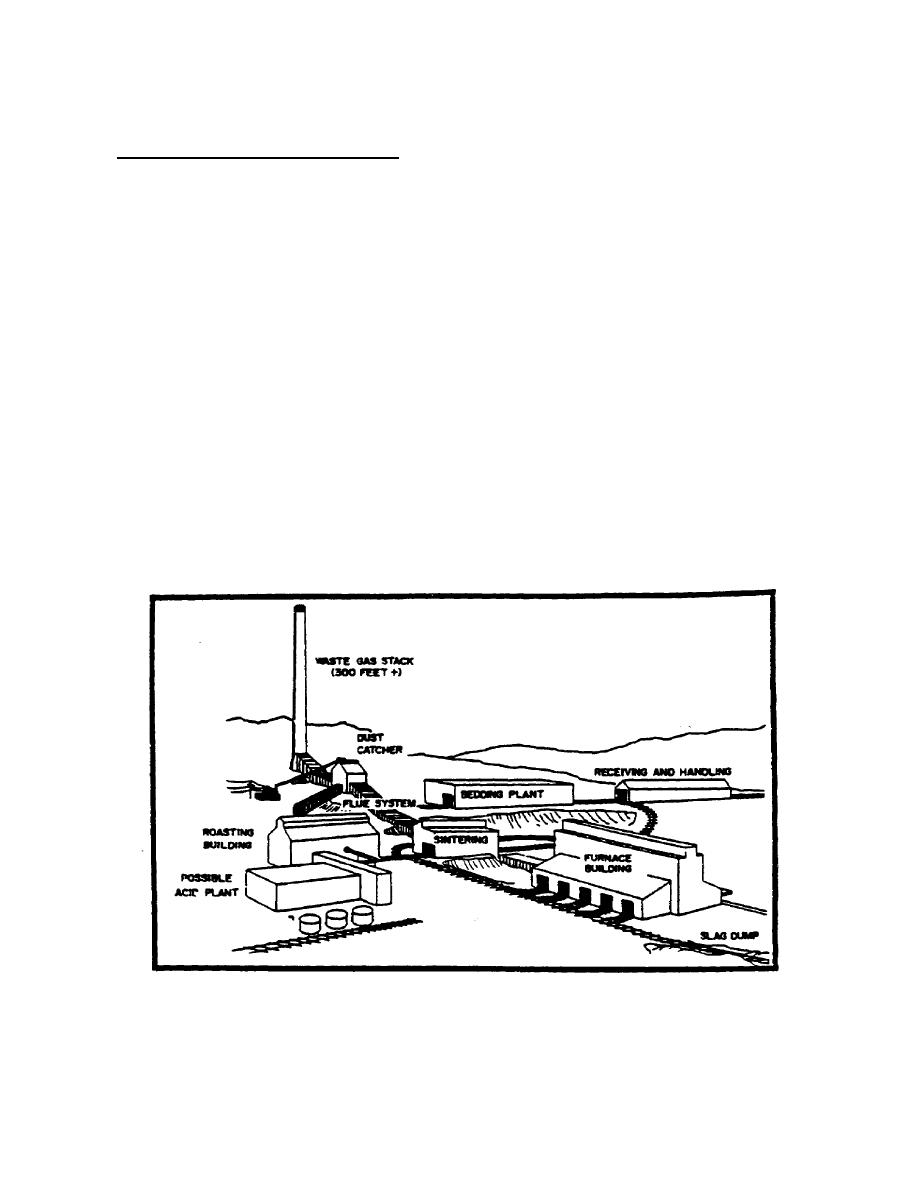
widely used and especially helpful when analyzing the succession of processes and
operations.
A few specially designed processing buildings aid in the analysis of
industrial facilities.
3. Aluminum, magnesium, and ore (lead, zinc, copper, and nickel) are all
considered mechanical processing industries. However, a combination of mechanical,
chemical, and heat processes are involved. To better analyze these industries the
production flows of specific ore industries are described for you in the following
pages.
a. Ore reduction flow (classical smelter).
(1) Coming direct from the mine, the ore will go to the receiving and handling
area for unloading and storage. It will then be moved to the bedding plant where
ore concentrates are mixed and limestone is added.
Limestone acts as a flux,
forming a slag with the impurities, in the subsequent smelting operations.
(2) In the bedding plant ore is roasted to remove as much free sulfur as
possible, and then sintered to form the ore fines into a clinker suitable for
smelting.
(3) Prepared ore is then moved to the furnace building where it is subjected
to smelting in either a blast furnace or Bessemer converter. In this process the
metal is separated from the waste products (slag), the metal normally is cast and
shipped, and the dark colored slag is dumped.
(4) As many of the ores processed will have a high sulfur content, it is
necessary to ensure adequate and safe venting of the gases that will result from
roasting, sintering, and furnace operation.
Shown in Figure 2-6 is the resultant
flue system, dust catcher, and waste gas stack which form an excellent
identification feature for this industry.
Figure 2-6.
Ore Reduction Plant (Classical Smelter).
21
IT 0673



 Previous Page
Previous Page
